The biggest and most expensive Mini you can buy gets a lot more power for 2020, finally giving it performance that’s worthy of the JCW name.
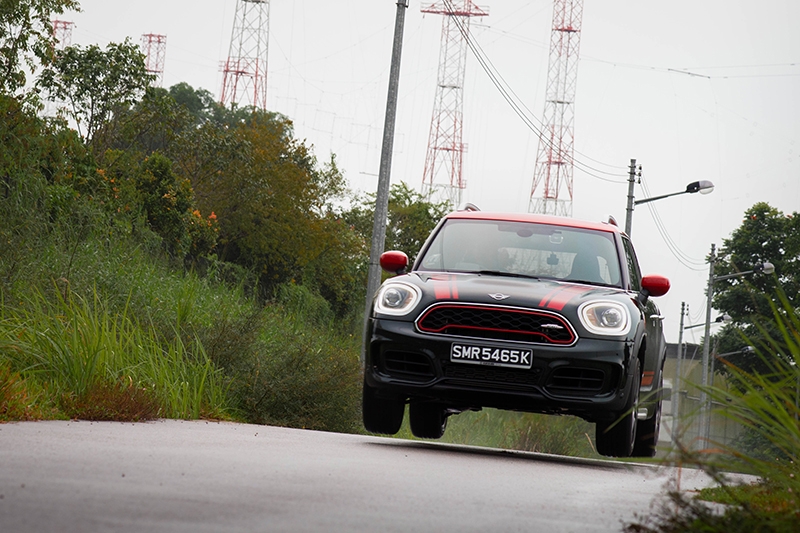
This isn’t an all-new car of course, nor is it even a facelift (that comes next year, when the Countryman gets new headlights and Union Jack-themed taillights just like the rest of the Mini range, as well as new digital displays). But though it looks no different, the 2020 Countryman JCW’s updates run far deeper than facelifts conventionally do.
With 306hp and 450Nm now on tap, the new Countryman JCW has made gains of 75hp and 100Nm over the 2019 model - a full one-third more power and torque than before. That’s all courtesy of an updated version of the B48 2.0-litre turbo engine, which is now in the same spec as you’d find in the BMW M135i, M235i, and X2 M35i.
As a result, the 0-100km/h time drops from 6.5 to 5.1 seconds, and it’s powerful enough flat-out to warrant a 250km/h electronic speed limiter. It’s rather a different beast to drive now, and finally feels special enough to justify its existence (and its price tag).

At more than 1.6-tonnes, the Countryman has always been a portly thing, particularly for its size. and 231hp simply was never enough to cut it as a performance car - especially not when rivals close to its over-S$220k asking price were putting out far more power.
Now though, there is a real urgency to the way the Countryman goes about its business. 306hp isn’t a small figure by any measurement, and indeed you get the feeling of being gently pinned to your seat whenever you bury the accelerator pedal.
Unlike many modern turbo engines, the Countryman JCW’s fireworks don't start to fizzle out past the midrange either. The 2.0-litre is game to chase the redline, and the subtly burbly soundtrack goads you into stretching the revs out too. That said, we wish it were more exuberant still, as the regular 3-door Mini JCW generates far more grin-inducing parps and crackles from its twin tailpipes.
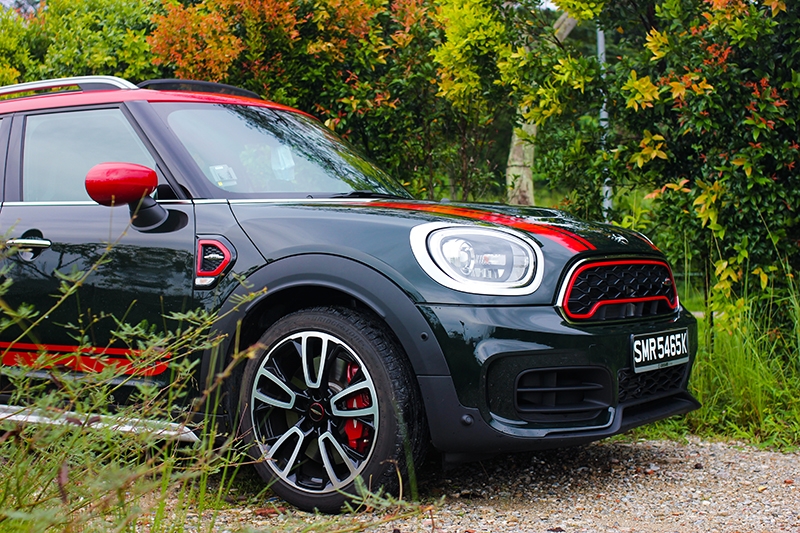
Through the twisties, the Countryman handles exactly how you’d expect of an oversized Mini: a capable chassis that’s hampered somewhat by the car’s height and weight. Tip the car into a corner and the nose keenly reacts, though not without a moment’s hesitation as it settles on its taller springs.
Where the Countryman really impresses though, is on corner exits. In addition to the extra power, the 2020 update also brings a mechanical limited-slip differential to the front axle, and it’s this feature that almost defines the car’s dynamic character.
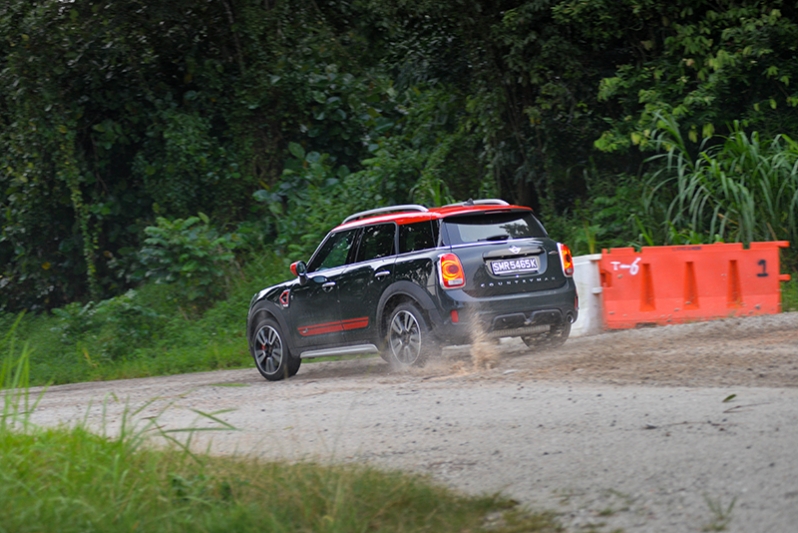
What the diff does is enable you to get back on the power staggeringly early, and so long as your inputs are smooth, “power understeer” is a concept that’s simply not in this car’s lexicon. Combined with the part-time all-wheel drive system that sends up to 50 percent of the engine’s power to the rear tyres once the fronts start losing grip, the Countryman becomes a crushingly effective grip n’ go sort of car.
So unbeatable is the Countryman’s traction that even getting it to go sideways on gravel for the photos was a challenge. This bodes well for the car’s all-roads-in-all-weather abilities, as does the extra suspension travel and its consequent resilience against being deflected off your chosen line by mid-corner bumps. Amongst the 300+hp all-wheel drive performance cars available today, it’s the Countryman JCW that you might imagine being the best suited for driving straight out of a showroom and onto a rally stage.
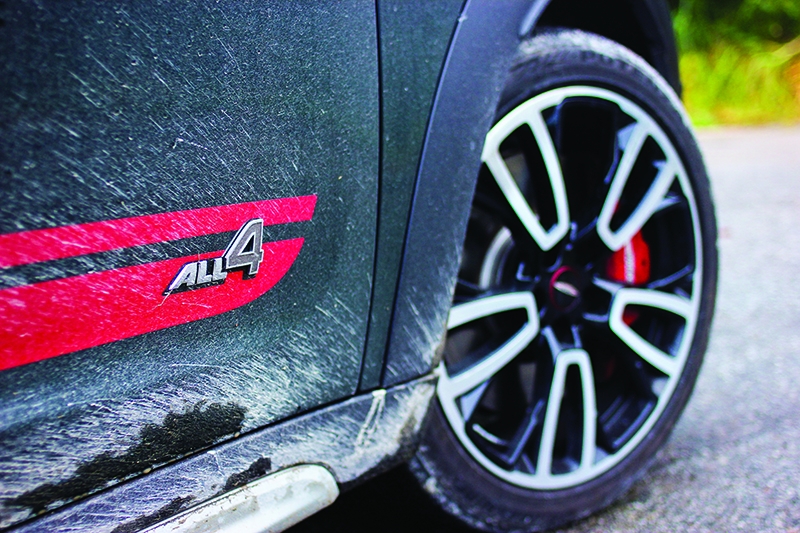
For all of that, the Countryman is pretty capable at the mundane stuff too. The ride quality is firm but still comfortable despite the 19-inch rims, the 8-speed auto is smooth and quick as you like, and in typical BMW fashion, there’s an extensive range of seat and steering wheel adjustability to find an ideal seating position.
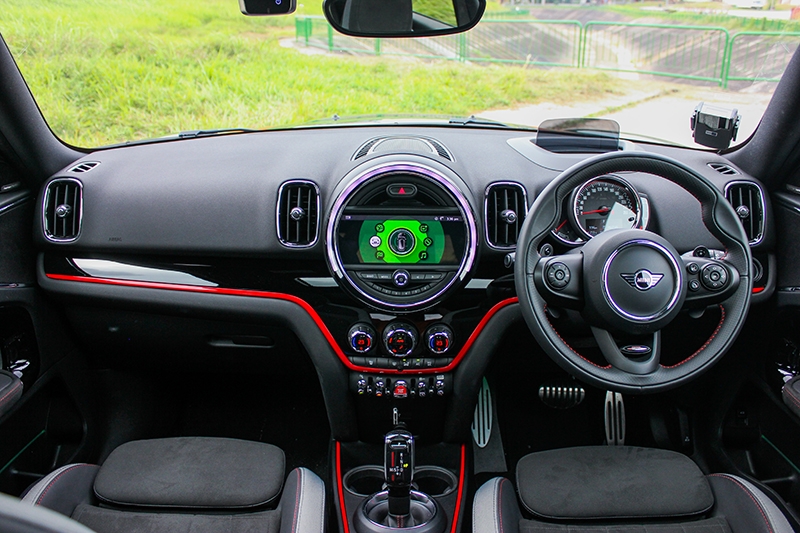
So, is the priciest Mini worth putting money on? Quite emphatically, yes. The new drivetrain gives the Countryman JCW a driving experience worth shouting about, one that’s a lot more memorable than the Volkswagen Golf R and the Mercedes-AMG 35 family.
Looking inward, the closest alternatives to the Mini are its corporate cousins from BMW. The eye-watering S$40k dearer X2 M35i doesn’t even bear thinking about, but the slightly sharper, smaller and less practical M135i is similarly priced and worth considering if you don’t need a crossover.
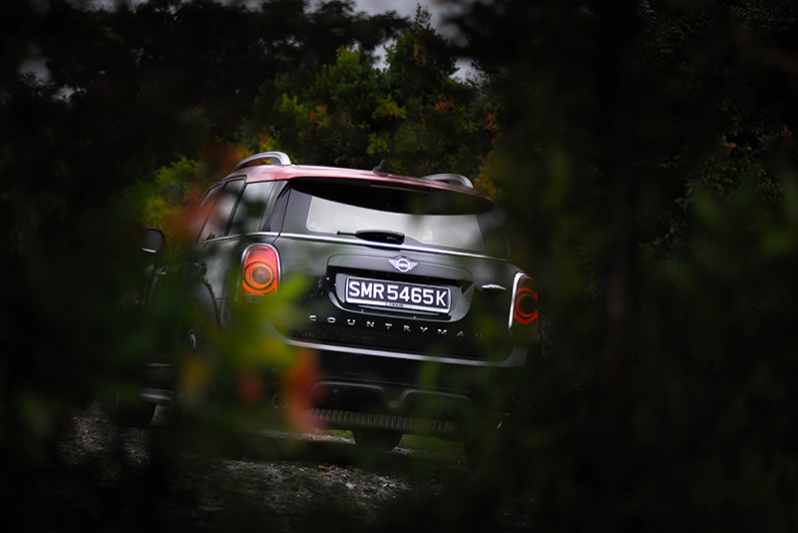
That said, If thrills are what you want, then conventional hot hatches like the Renault Megane RS, Honda Civic Type R and Hyundai i30N provide more excitement for a lot less dosh, and not much loss to practicality either. But amongst its all-paw rivals, relatively tech-lite cabin aside, the Countryman JCW has the best spread of excitement, practicality, and value.
